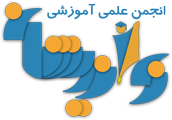جستجو در تالارهای گفتگو
در حال نمایش نتایج برای برچسب های 'keypad'.
2 نتیجه پیدا شد
-

MIKROC PRO for DSPIC 2010 Build 2 FULL VERSION
Mehdi.Aref پاسخی ارسال کرد برای یک موضوع در دانلود نرم افزارهای مهندسی برق
بعد از کلی گشتن تو اینترنت بالاخره تونستم نرم افزار کامل و کرک شده شرکت MikroC رو که مخصوص سری PIC24 & DSPIC & PIC33 پیدا کنم. این کامپایلر رو اگه بخواهید از سایت خود شرکت دانلود کنید 17Mb هست در حالی که نسخه کامل و کرک شده این کامپایلر در حالت فشرده 90Mb میشه که واسه دانلود کردنش حتما باید به اینترنت پرسرعت دسترسی داشته باشید. لینک دانلود نسخه ی کامل میکرو سی mikroC for dsPIC یک کامپایلر قوی جهت کار و برنامه نویسی به زبان C و اسمبلی برای میکروکنترلر dsPIC است. بیش از 95% میکروهای dsPIC را پشتیبانی می کند . از برنامه های جانبی آن USART Terminal , HID Terminal , UDP Terminal , MMC Card Terminal , Picflash Programmer , EEPROM Editor , GLCD Editor , Seven Segment Editor , BootLoader می باشد. قابلیت نمایش فضای اختصاص داده به هر Procedure , RAM , ROM و هر آرایه و متغیر و نمایش به شکل هیستوگرام از فضاهای میکروکنترلر انتخابی. تبدیل برنامه سطح بالا به اسمبلی. کنترل Device Flag . نمایش Code Assistant بر روی صفحه ادیتور برنامه. دستورات پیشرفته برای ADC , CAN , CANSPI , Flash Memory , Flash Memory FAT , EEPROM , Graphic LCD , I2C , Keypad , LCD 4BIT , LCD 4BIT Graphic , Multi Media , OneWire , PS/2 , PWM , RS-485 , I2C , SPI , UART , Sound , SPI , USART , USB HID و پشتیبانی از تمام دستورات استاندارد ANSI برنامه C دارد. همراه با Help قوی که آموزش کامل برنامه نویسی C و اسمبلی را برای dsPIC و تمام دستورات پیشرفته با مثال آورده است. مهمتر آنکه پروژه های بسیار خوبی همراه با شکل مدار با گرافیک بالا در بخش Help برنامه موجود است. بیش از 70 مثال برنامه نویسی با میکروهای مختلف و بیش از 20 پروژه پیشرفته آماده همراه سورس کد. جهت دانلود کتاب آموزشی به سایت شرکت سازنده بروید [Hidden Content]- 7 پاسخ
-
- 3
-

-
- adc
- bootloader
- (و 23 مورد دیگر)
-
All AVR ports have true Read-Modify-Write functionality when used as general digital I/O ports. This means that the direction of one port pin can be changed without unintentionally changing the direction of any other pin with the SBI and CBI instructions. The same applies when changing drive value (if configured as output) or enabling/disabling of pull-up resistors (if configured as input). Each output buffer has symmetrical drive characteristics with both high sink and source capability. The pin driver is strong enough to drive LED displays directly. All port pins have individually selectable pull-up resistors with a supply-voltage invariant resistance. All I/O pins have protection diodes to both VCC and Ground as indicated in Figure. input and output port in avr atmega 8535 All registers and bit references in this section are written in general form. A lower case “x” represents the numbering letter for the port, and a lower case “n” represents the bit number. However, when using the register or bit defines in a program, the precise form must be used. For example, PORTB3 for bit no. 3 in Port B, here documented generally as PORTxn. The physical I/O Registers and bit locations are listed in “Register Description for I/O-Ports” on page 63. Three I/O memory address locations are allocated for each port, one each for the Data Register – PORTx, Data Direction Register – DDRx, and the Port Input Pins – PINx. The Port Input Pins I/O location is read only, while the Data Register and the Data Direction Register are read/write. In addition, the Pull-up Disable – PUD bit in SFIOR disables the pull-up function for all pins in all ports when set. Most port pins are multiplexed with alternate functions for the peripheral features on the device. How each alternate function interferes with the port pin is described in “Alternate Port Functions”. Refer to the individual module sections for a full description of the alternate functions. Note that enabling the alternate function of some of the port pins does not affect the use of the other pins in the port as general digital I/O. General Digital Input-output Each port pin consists of three register bits: DDxn, PORTxn, and PINxn. As shown in “Register Description for I/O-Ports” on page 63, the DDxn bits are accessed at the DDRx I/O address, the PORTxn bits at the PORTx I/O address, and the PINxn bits at the PINx I/O address. The DDxn bit in the DDRx Register selects the direction of this pin. If DDxn is written logic one, Pxn is configured as an output pin. If DDxn is written logic zero, Pxn is configured as an input pin. If PORTxn is written a logic one when the pin is configured as an input pin, the pull-up resistor is activated. To switch the pull-up resistor off, PORTxn has to be written logic zero or the pin has to be configured as an output pin. The port pins are tri-stated when a reset condition becomes active, even if no clocks are running. If PORTxn is written a logic one when the pin is configured as an output pin, the port pin is driven high (one). If PORTxn is written a logic zero when the pin is configured as an output pin, the port pin is driven low (zero). When switching between tri-state ({DDxn, PORTxn} = 0b00) and output high ({DDxn, PORTxn} = 0b11), an intermediate state with either pull-up enabled ({DDxn, PORTxn} = 0b01) or output low ({DDxn, PORTxn} = 0b10) must occur. Normally, the pull-up enabled state is fully acceptable, as a high-impedant environment will not notice the difference between a strong high driver and a pull-up. If this is not the case, the PUD bit in the SFIOR Register can be set to disable all pull-ups in all ports. Switching between input with pull-up and output low generates the same problem. The user must use either the tri-state ({DDxn, PORTxn} = 0b00) or the output high state ({DDxn, PORTxn} = 0b10) as an intermediate step.
